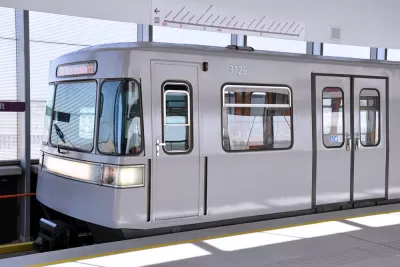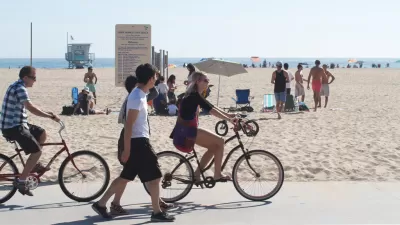How did Vienna, Austria, substantially reduce car trips while increasing bicycling and trips taken by public transportation over 25 years? A new paper published in the International Journal of Sustainable Transportation provides answers.

"Vienna's Path to Sustainable Transport" examines the politics of implementing sustainable transport policies in Vienna over a 25-year period from 1993 to 2014, leading to a reduction in the car mode share of daily trips from 40 percent to 27 percent while doubling cycling mode share and increasing transit mode share from 29 percent to 39 percent.
"The key to Vienna’s success has been a coordinated package of mutually reinforcing transport and land-use policies that have made car use slower, less convenient, and more costly, while improving conditions for walking, cycling, and public transport," notes the abstract.
Two strategies in particular deserve credit, according to researchers Ralph Buehler, professor of Urban Affairs, Virginia Tech; John Pucher, professor emeritus of Urban Planning, Rutgers University, and Alan Altshuler, professor emeritus of Urban Policy and Planning, the John F. Kennedy School of Government at Harvard University:
- Expansion of the U-Bahn or metro, a young system opening in 1978, two years after D.C.'s now-troubled Metro.
- Parking management
On a political level, the abstract notes two additional factors:
- "The continuity of social democratic governments in Vienna since 1945 has provided a crucial political basis for long-term implementation.
- "The Greens have vigorously pushed for accelerating implementation of sustainable transport policies since becoming part of the ruling coalition government in 2010."
Vienna, as well as other Western European cities, have made great progress in moving toward sustainable transportation patterns. This paper provides lessons for other cities to reduce auto-dependence.
FULL STORY: Vienna's path to sustainable transport

Alabama: Trump Terminates Settlements for Black Communities Harmed By Raw Sewage
Trump deemed the landmark civil rights agreement “illegal DEI and environmental justice policy.”

Study: Maui’s Plan to Convert Vacation Rentals to Long-Term Housing Could Cause Nearly $1 Billion Economic Loss
The plan would reduce visitor accommodation by 25% resulting in 1,900 jobs lost.

Planetizen Federal Action Tracker
A weekly monitor of how Trump’s orders and actions are impacting planners and planning in America.

Baltimore Ordered to Improve Sidewalk Accessibility
The city is one of many to face lawsuits for failing to comply with the Americans with Disabilities Act.

This Toronto Suburb Has More Bus Riders Than Columbus, Ohio
Brampton, Ontario used gradual improvements in service to prove that if you build it, they will ride.

Paris Bike Boom Leads to Steep Drop in Air Pollution
The French city’s air quality has improved dramatically in the past 20 years, coinciding with a growth in cycling.
Urban Design for Planners 1: Software Tools
This six-course series explores essential urban design concepts using open source software and equips planners with the tools they need to participate fully in the urban design process.
Planning for Universal Design
Learn the tools for implementing Universal Design in planning regulations.
Smith Gee Studio
Alamo Area Metropolitan Planning Organization
City of Santa Clarita
Institute for Housing and Urban Development Studies (IHS)
City of Grandview
Harvard GSD Executive Education
Toledo-Lucas County Plan Commissions
Salt Lake City
NYU Wagner Graduate School of Public Service




























